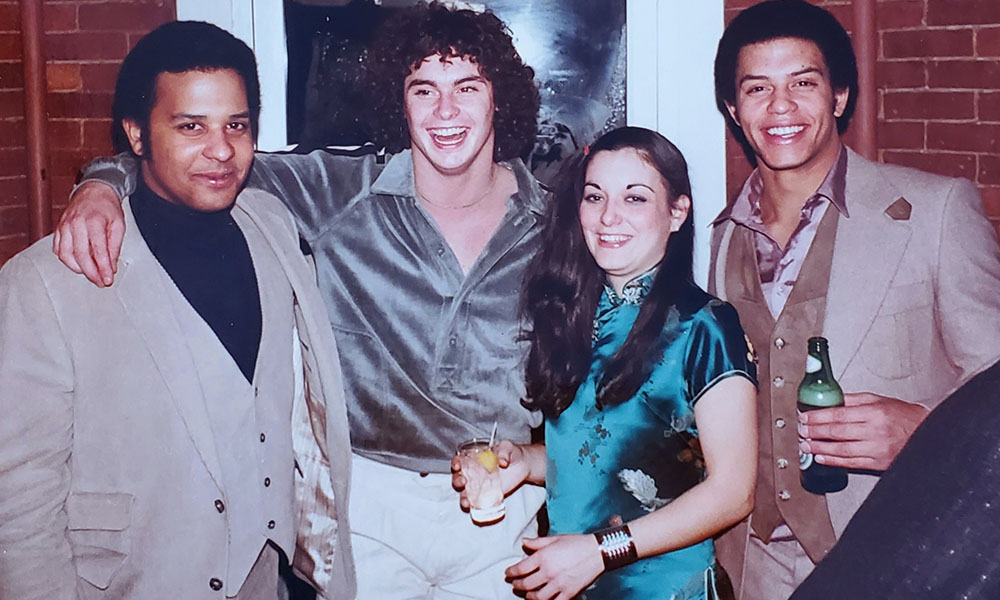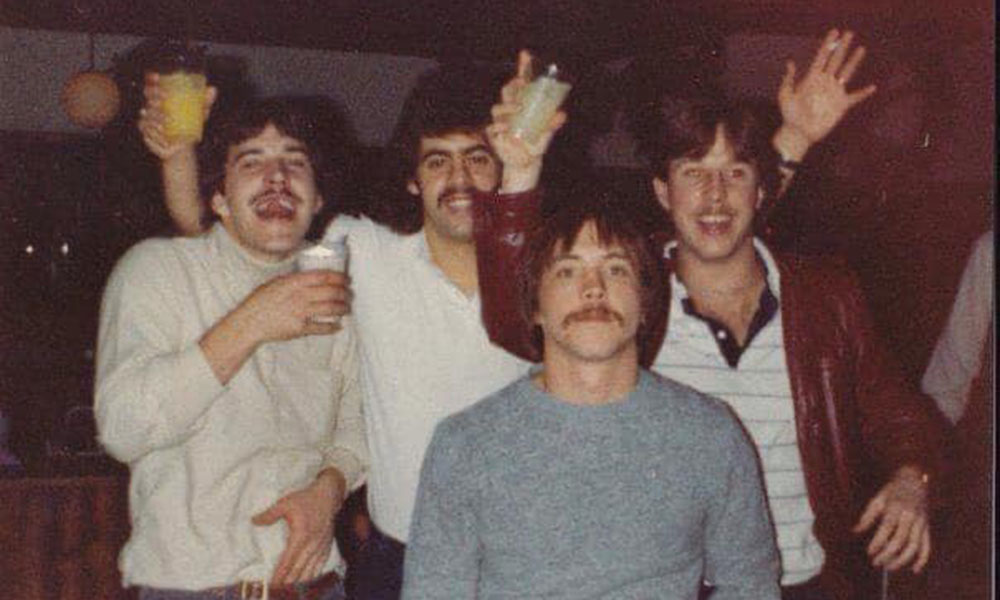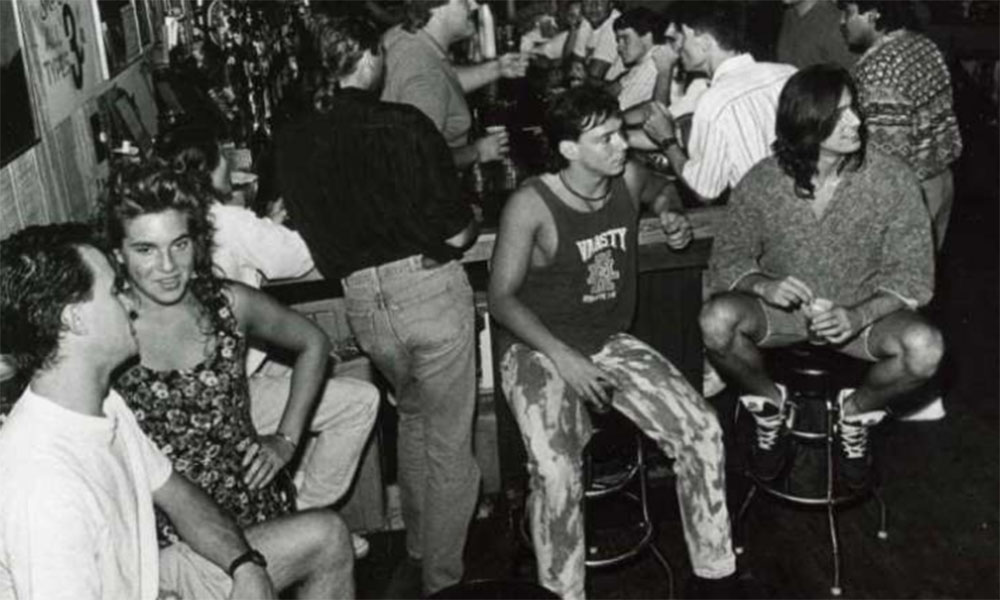The last time clubbing occupied an active portion of my social life was more than two decades ago, when I was studying abroad in Edinburgh, Scotland for the year. On Wednesday nights, I’d pull on my tightest jeans, don my flashiest button-down, slick up my hair, David Beckham–style, and take a cab to this club called The Cavendish. As soon as you’d walk in, your entire body would be enveloped in the thump-thump-thumping of the bass from the DJ booth, the air thick with machine-made fog and smelling sour-sweet of sweat, booze and puke. My drink of choice: double-vodka Red Bull. My song of choice: Kylie Minogue and Robbie Williams’ “Kids.” My hour of exit: preferably, when the sun was coming up.
Stateside, an equally young and hedonistic club scene had been present in Saratoga Springs since the 1950s and would blossom into a modern heyday between the ’60s and ’90s. Sadly, I missed the tail end of it, being just a year or two too young. (The closest I ever got was being hired as the bar-back at 9 Maple Ave. in the late ’90s.) But, luckily, I found plenty of nostalgic former party people clamoring to reminisce and fill me in on the best of times. Below, you’ll find an oral history of five of the Spa City’s most legendary clubs.
The Embers
(1950s-1960s)
“I got to [Skidmore College] in the fall of 1960, and one of the things that everyone said was, ‘There are 98 bars here in town.’ We didn’t date on campus, because we had to be in by 10:30pm at night. But when gentlemen would come, we’d go to The Embers. It was this low-slung barn type of place outside of Saratoga. It was very dark and very smoky, because everybody smoked. And we drank beer. I remember seeing couples out there swaying or dipping to Ray Charles’ ‘Georgia on My Mind.’ That song must’ve played at least three times a night.” —Val Marier, freelance journalist and Skidmore class of ’64
(Editor’s Note: Skidmore didn’t go co-ed until 1971, hence no men being on campus during her era.)

The Golden Grill Tavern
(1960s-1990s)
“The thing that we loved about The Golden Grill was that it had a really great dance floor—it was small but far and away the best one in Saratoga. It was a raised-up, wooden floor that had some disco light arrangements built into it and a disco ball overhead. The Golden Grill also had a superior sound system: a big overhead speaker system, a DJ booth at the end of the room and very knowledgeable young DJs. The Albany pimps often brought their strings of rather glamourous-looking young women there on what they described—within my hearing, anyway—as their ‘nights off.’ If you arrived down there on a Thursday or Friday night around 11pm or midnight, you would encounter some of the sleekest, shiniest, most elaborate pimp-mobiles lined up along the curb.”
—Jim Kiehl, retired Skidmore College professor, who first arrived in Saratoga in 1969, the year the Golden Grill opened

The Rafters
(1970s-1980s)
“The place was so big. On a summer weekend, we put 1,500 people through the door there. It’s important to recognize that the drinking age in New York State at the time was 18. From where I was on a little stage as a DJ, sitting on an empty beer keg, I’d say three-quarters of the crowd was under 21. I’d get things started about 9:30pm or 9:45pm with dance music, and we’d go right up until 3am. One Saturday afternoon, I remember driving around to all the record stores in the Albany area trying to find The O’Jays’ [single] ‘Love Train.’ The first time I played it, I turned up the volume, and heard all the chairs upstairs sliding back from the tables, because people were streaming down the stairs to come and dance to it.” —Don Hamilton, DJ at The Rafters, 1973-74
“I moved up to Saratoga from New York City in 1974 and got a job bartending
at The Rafters through a friend of mine. I was always into music, so I asked the owner whether I could take a shot at DJing. I was really scared because I stuttered pretty bad from my youth until my 40s. But as a disc jockey at a nightclub, you didn’t have to talk. You had to say, ‘last call at the bar.’ The Rafters used to have over 1,000 people every Saturday night for almost 10 years. When the drinking age shifted up from 18 to 21 [in 1982], that hurt The Rafters a certain amount. It was a great club, and it was perfect for young people.” —Tom Lewis, former bartender and DJ at The Rafters, 1974-1980s
“I was a Long Island native, working in the horse racing community at the time. I was in Saratoga the summer of 1982 and 1983. The Rafters was just a magical place, and I think anyone who set foot in there felt that way. You can’t forget it. The night before Opening Day at the races was a huge night. Everyone you knew was there. It was, like, the place to be in ‘the August place to be.’ I remember going there [every Wednesday], Friday and Saturday the entire four weeks of the racing meet. I remember dancing through the fog—they had a fog machine—to the Steve Miller Band song “Abracadabra” in 1982 and “Maniac” in 1983. It was like the Studio 54 of Saratoga.” —Serena Jade, author and speaker

The Bijou
(1980s-1990s)
“The Bijou was an old, dark, dingy Saratoga bar on Broadway with cover bands playing in the front room. One day, when The Figgs were looking for gigs, someone told us there was [also] a back room. We asked if we could do a show, and the guy brought us back, and it was this amazing live room with a full PA system—it was like a proper club. We promoted a couple of shows there, and we went from being a band that played people’s parties to feeling like The Who at the Monterey Pop Festival.”
—Pete Donnelly, vocalist/bassist, The Figgs
The Metro
(1980s-1990s)
“The scene inside The Metro was a good mix; I wouldn’t say it was a kid’s joint like the places on Caroline Street nowadays. It was comparable to the type that you’d get in 9 Maple Avenue: people who wanted to be out and be seen. There were one or two small incidents I remember at the door, where I basically extorted people, because they were being assholes, and if they wanted to come in, they had to shape up. That usually involved bills in large denominations.” —Bill N., former doorman at The Metro
“There used to be lines to get in that building. People came from everywhere in the Capital District to go to The Metro. I was a bartender there for several years up in the jazz bar. There were three different bars there: The first bar was built into this green room, and there was a widescreen TV where people could talk and they also might have a small rock band there. You’d go to the back, and it was the dance club. And then you’d go up a floor, and that was the jazz bar. There was usually a live jazz band, and you had to watch your decorum. Some of the bouncers that we had were Saratoga policemen. I still have dreams about busy nights at The Metro. It was insane.” —Kelly Hamik, former bartender at The Metro
“In the summer of ’94, my first summer out of college, I would frequent the upstairs at The Metro most weekends to hear Jill Hughes and Carl Landa tear up soul classics. The cool thing about The Metro back then was it was like a hip food court for music…upstairs you had jazz and soul, downstairs was straight-ahead rock and in the back was a disco for dancing. In retrospect, it was the one venue that satisfied the mind, body and soul.”
—Jim Mastrianni, chairman of the board of directors at Caffè Lena
